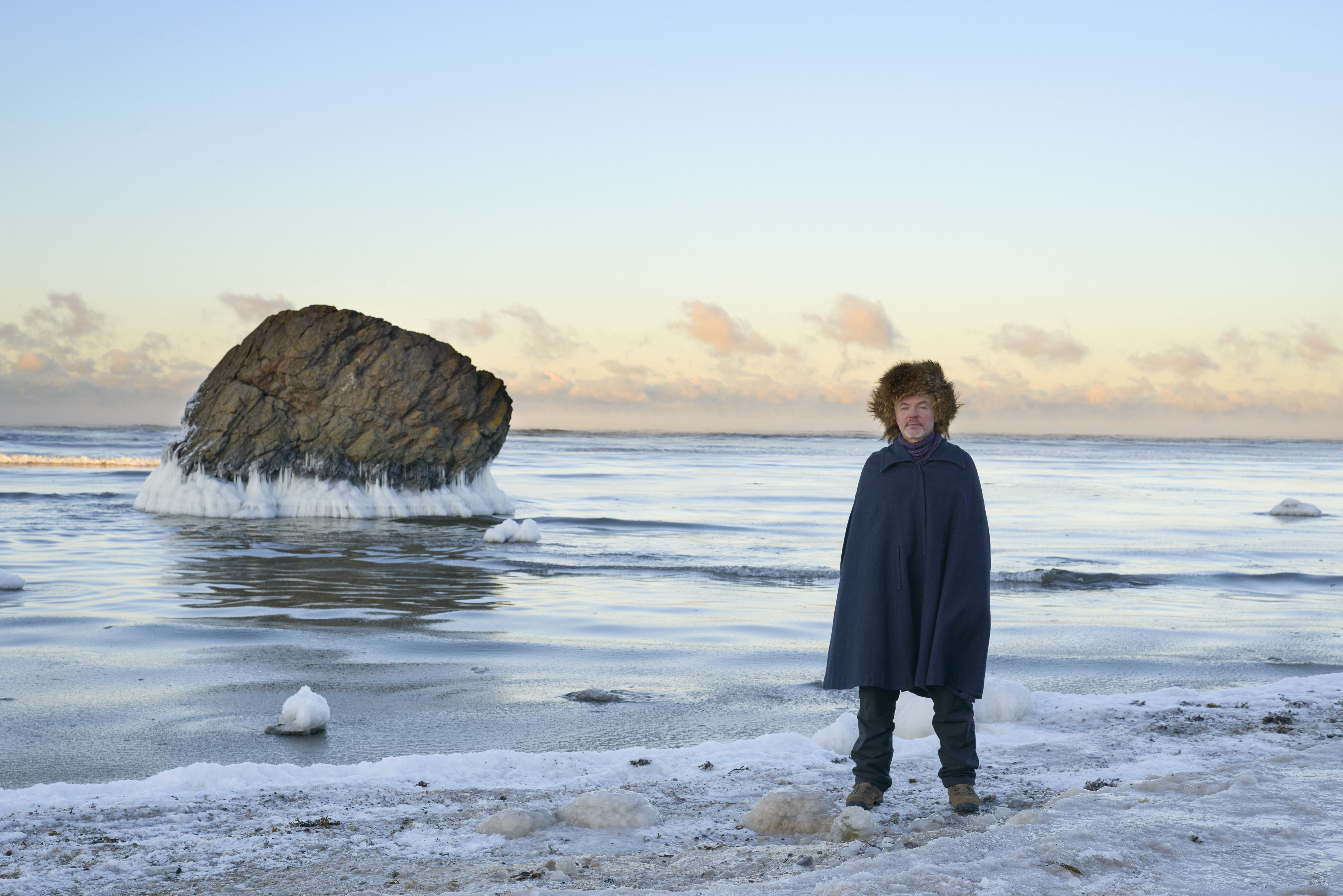
14 minute read
Against the Spirit of the Times
After a prolonged hiatus from feature films, director Marko Raat makes a return with 8 Views of Lake Biwa, a collection of eight love stories from Japan set against the backdrop of the Estonian countryside.
By Andrei Liimets Photos by Virge Viertek
In the early 2000s, you were among the most active filmmakers in Estonia, winning the film critics’ yearly award twice. Now, there’s been over a decade between two of your feature films. Why such a long hiatus?
It’s not unique. If you don’t become a messiah with your first or second film - not winning significant awards or garnering hundreds of thousands of viewers in Estonia - you end up at the back of the line. Officially, it’s not like that, but filmmakers don’t have a stable place to start their next project, and it’s easy to say no. Inevitably, you fall into a hole. You try for a while, but if things don’t work out, you think that maybe you should do something else in the meantime.
On the other hand, I’ve been working with documentary films since the end of school, and I quickly got a taste for it. I could pursue the same things there, experience the same tension on set, the excitement of planning, and use very similar methods to diffuse the tension of the main characters. It’s just that it’s so much more time-consuming for the “non-actors” to have authentic moments in front of the camera. At the same time, you have the time when working alone, and I really enjoy filming myself. I wasn’t even sure if I wanted to make another feature film. I understand Mark Soosaar very well, why he gave up on fiction after one film.
At a time when nothing was taking off, friends suggested making an exhibition for the Estonian National Museum. It absorbed me for eight years. Over a hundred audio-visual units accumulated.
However, some ideas still lingered for a feature film. Then others started nudging me to try again, and the longing for work with actors grew. Producer Ivo Felt also started pushing, saying that now that the ENM is done, we should give it a try. I took out something from the drawer that had been haunting me, and that’s how I returned to 8 Views of Lake Biwa.

Why did you want to tell this particular story?
The motivation behind it is my interest in archaic ways of thinking: magical thinking, mythologies, traditions, all ancient texts, whether in their original form or reworked into fairy tales. It’s all so different from our current personality-centred narcissism. It has been the foundation of human cognition for millennia, not only in Western society but worldwide. With the Enlightenment and the revolution of humanism, we disdainfully threw it away and declared it ridiculous.
When I read the book 8 Views of Lake Biwa in 2005, the images for the film started flowing, but I didn’t immediately find the directorial key because I couldn’t articulate for myself why I wanted to bring these Japanese stories to Estonia. But then it occurred to me that this material is based on universal magical thinking – the belief that all things in the world are directly interconnected. And at the same time, Biwa is free from cultural associations that might be too familiar to me.
While working for ENM, I also got closer to the world of magical thinking. I had the chance to read authentic protocols of witch trials, and what fascinated me was not the violence- and fear-based narrative that we mainly know about these trials, but the authentic magical thinking documented in the 17th and 18th centuries in those cases. The tragedy of science is that it is very resource intensive. Considering arguments for and against, weighing pros and cons, is somewhat against the spontaneous and impatient human nature. Therefore, many decisions are still made based on that same magical thinking, and in many cases, it’s difficult to determine which approach is ultimately more effective. Science, at the same time, compromises itself by saying that we’ll have more data tomorrow, so we might say something else. Not to mention the arrogance towards things that science cannot describe.
I became immensely interested in making a film with characters who derive 100% from magical thinking, accepting themselves as part of the universe, as you feel when living in direct contact with the environment. A classic example of magical thinking: storks have left, bad weather is coming. No one knew where the storks were going, but there was a direct connection – the weather was clearly getting cold because the storks were leaving. Or a more modern example heard frequently this summer: what global warming, it’s such a cold summer day! Climate and the weather of one day are very different things, but a person thinking magically sees only an immediate connection.
Why did this text resonate with you?
The fatalistic acceptance of certain conditions by characters and the perceived irrationality in their decisions intrigued me. The Enlightenment brought us complete individualism and measuring everything in pragmatic values. Poetry, as one of the ways of magical thinking, is fundamentally important to me, offering a way to step out of tiresome rationality.
As Estonians, we currently define ourselves as a Western society, yet there is a certain restraint and closeness to nature shared with the Japanese. How many similarities do you see between these two cultures?
Emotional restraint is not a wrong parallel at all. I went to Japan for the first time in my life this spring, to Lake Biwa, after filming, and it’s incredibly pleasant to travel on a plane without annoying chatter. There is something similar in our psychological response – everything is boiling and exploding inside, but it may not be very apparent externally. Although the goal wasn’t to make the film emotionally neutral, we did think about the special body language and dignity of the Japanese, in collaboration with the actors.

To add another layer of specificity to the culture, you set the story by Lake Peipus. You have a country house in another part of Estonia, in Nõva. Why this decision?
For me, it was a logical choice. If magical thinking has survived anywhere, at least in our imagination, it’s in these peripheral areas. That’s why Setomaa and Võrumaa are so dear to us, with all their syncretistic and lively confusing village Christianity, which has nothing to do with university theology. We like to believe that even that isolated, independent, and compact Old Believers community is like that. As a film viewer, I find it easier to believe that modern young people there might behave differently and unexpectedly. The goal was to have a timeless yet contemporary story. Specific era-accurate things like phones, computers, and cars were deliberately excluded. The only machines you see are a boat motor and, when the big world intrudes, a military truck.
Archaic stories often have a very masculine, male-centric perspective. To what extent did you sense that the stories in 8 Views of Lake Biwa are somewhat outdated for today?
The Biwa book is indeed old-school dramaturgy in that sense. I was even a bit surprised that the screenplay got approved, but I didn’t want to, nor could I, politically correct it. Like most old fairy tales, this story is full of women suffering due to men, but outside the contemporary issues of the white-collar power elite, I still don’t believe in suffering men. Therefore, female characters in this film’s village setting are hit harder. I don’t see the point in formally reversing roles, which is done a lot nowadays – it doesn’t add anything new to the artistic field. I’m eagerly awaiting a different female perspective and fresh characters – not just flipping genders and power positions in the same stories, with tired macho-empowered narratives.
Love stories often have caricatured expectations of a happy ending. In your stories, there’s brutality, violence. Why did this become one of the main themes?
Love is also cruel, and Dauthendy (The basis of the film script is the book of the German Japanophile Max Dauthendy, published in 1911, with the same name - AL) already had the genre exactly in place –these interwoven love stories are tragedies. In a tragedy, the protagonist must perish, and I remained true to the genre. Brutality and beauty simultaneously come from the world of fairy tales. Fairy tales are euphemisms for talking about harsh things through flowers. Society has always been two-faced, and some things can only be expressed through a conventionally stylized artistic language; otherwise, it would be unbearable.
Which emotion is stronger in humans – the ability to love or to hate?
I’m afraid it’s hate. Hate is a very strong and straightforward emotion. I often see on set how easy it is for an actor to ignite from hate. However, it is generally terribly boring. Loving is more challenging, and the means to show it can be very diverse.
You have a very interesting ensemble of actors – Jan Uuspõld, more known for comedy, the young rebel Jarmo Reha, and Tommi Korpela from Finland. Was there a clear logic behind your choices?
It’s an ensemble play, and I really like putting together experienced and less experienced actors. Their energies are different and refreshing for both. Sometimes there’s an itch about an actor – you want to see them from a different angle that maybe hasn’t been seen before but which you believe is hidden there. I see dormant potentials in many experienced actors that I want to try to uncover. Whether we reach that interesting place is a separate issue. These actors came together because I really wanted to try something with them.
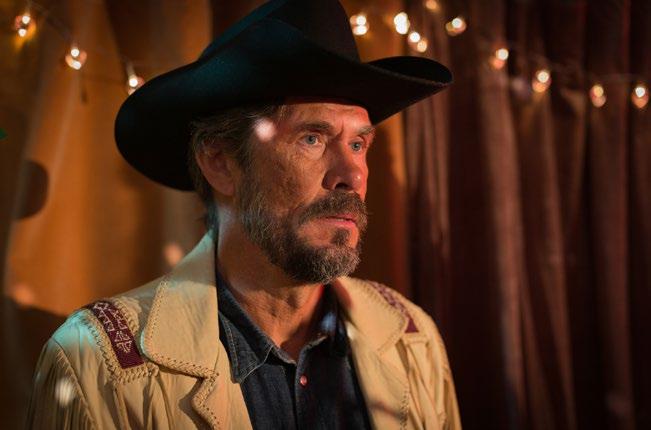

Did you succeed?
I think several actors did a very profound and touching role. I would emphasize that although the source material was sometimes “unrealistic,” the goal was to play it psychologically realistically, as we perceive the intimate world.
Is there one of the eight stories that is particularly important to you personally?
While reading, the story of ordering Hanake’s painting made the bell ring because it helps a modern person recognize our alienation from nature and older people from their children. How we no longer understand. Among women, magical thinking has been more acceptable and tolerated in society, as masculine power has been rational, but women have known and passed on this secret language more. The confusion that arises in this story when the father no longer understands the code, doesn’t know the language of poetry, the secret script of love, and therefore cannot understand his child, provided me with delight.
In Dauthendy’s book, the 1905 war between Russia and Japan is mentioned. In 2005, the reminiscence seemed fresh and prophetic. Now, I cut specific references to that war to avoid talking about the same topics in art that newspapers are already dealing with.
What can a modern, rational, multitasking person learn from magical thinking?
All self-help books say: take time for yourself, be yourself, you don’t have to be the king of the world, and so on. They remain just words, until you perceive through them that something of such a world is possible. The purpose of writing or making a film is to show the possibility of a different world. Magical thinking can, of course, be misused – in the film, for example, women suffer more because they don’t exploit it, but men do. In the peasant society, urban clothes were first worn by men; they discarded traditions, embraced enlightenment, and left the folklore to the female line.
Magical thinking brings a certain acceptance. It can also be called poetic thinking, so it doesn’t sound too esoteric. You don’t have to understand the reasoning behind everything. Not everything has to be pragmatically useful. If you manage to see values elsewhere, that’s already very good.

Speaking of pragmatics: recently, Estonian films have done very well abroad, but at the end of the year, there were complaints about the lack of success with the domestic audience. How do you measure your success?
The issue of success and art metrics is exceptionally harsh, cruel, and unfair, especially concerning Estonian cinema. We are competing in real-time with the entire world, both abroad and at home. We don’t speak in the same way about, for example, American cinema, deeming it a terrible year, even though 99% of American films disappear, and no one watches them. Even if there appears to be a formula for success in entertainment, it usually doesn’t work, even if millions are invested in it.
To even stay on the radar, a small culture often depends on being observed from the side, obtaining the festival checkmark. For audience success, you need a very topical theme or resonance with the spirit of the times. However, that spirit of the times is not beneficial for art because it discusses the same things that the time itself is dealing with. Art must be sovereign, certainly not moralistic and pedagogical. Ideally, always ahead of what becomes the inert and ideological spirit of the times. While this is mostly unavoidable for entertainment, as people usually go to see something they can be sure about, in art, one would want an experience they haven’t yet had.
For getting somewhere, you don’t only need strong films but a lot of luck. I deliberately made my life complicated; in a way, I always work against the spirit of the times and willingly exclude success through that. But I adore the process; I am really very happy when, after seven years of holding a documentary character’s hand, something “happens” in the frame, or we get the scene so alive with the actor that the film crew doesn’t dare to breathe.
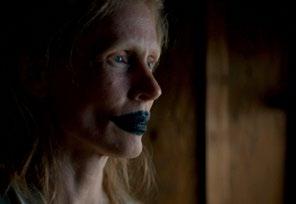
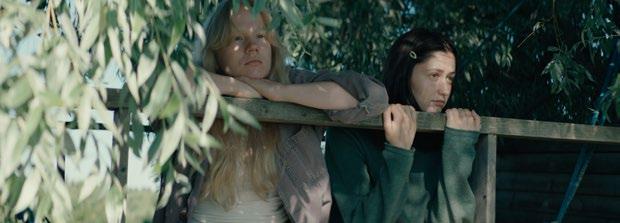
8 Views of Lake Biwa
Genre: coming of age, drama Director and Screenwriter: Marko Raat Cinematographer: Sten Johan Lill E.S.C. Production Designer: Kristina Lõuk Editor: Jaak Ollino Jr Composer: Jakob Juhkam Sound: Karri Niinivaara Main cast: Elina Masing, Tiina Tauraite, Jan Uuspõld, Hendrik Toompere Producers: Ivo Felt, Dora Nedeczky Co-producers: Mark Lwoff, Misha Jaari Produced by: Allfilm (EE), Bufo (FI)
Sales: Film Republic / Xavier Henry-Rashid / xavier@filmrepublic.biz
World premiere: International Film Festival Rotterdam, January 2024
126 min / DCP / 1.85:1 / 5.1
On the shimmering shores of Europe’s otherworldly edge, two teenage girls, Hanake and her best friend are discussing their first love interest while gazing out at yachts sailing to Kyoto. They whisper prayers and poems, the language of their longings. But the magic is fading in their isolated fishing village as they come to terms with a recent disaster, with some indulging in acts of erotic art, some in spiritual spells. It becomes clear that intimacy alone won’t help them process their loss.
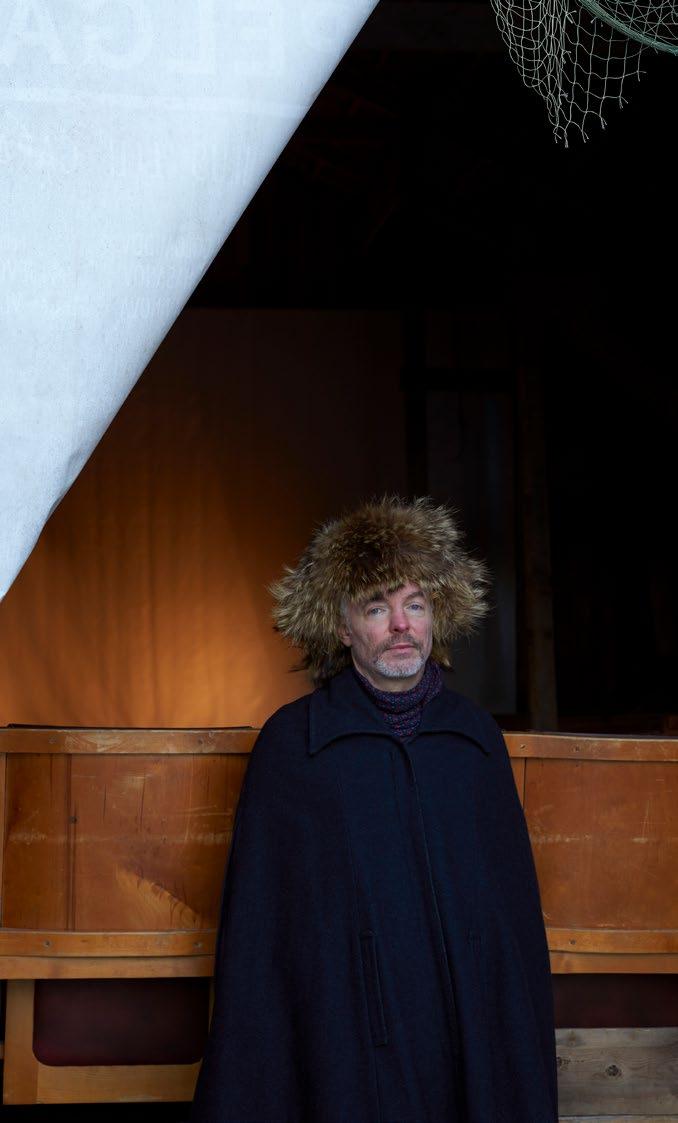
Marko Raat
(born in 1973) has been active in the fields of arthouse fiction film and documentaries since 1999. With a background in theatre directing and fine art, he brings a wealth of experience to his craft. His latest feature-length documentary, Funeral Diaries, made its premiere at Dok. Fest Munich and took the spotlight as the opening film at DocPoint Tallinn. Adding to his recent accomplishments, Raat’s short film A Chairman’s Tale made its debut at the 56th International Art Exhibition of la Biennale di Venezia.
Selected filmography:
For Aesthetic Reasons (documentary, 1999)
Agent Wild Duck (feature, 2002)
Knife (feature 2007)
Toomik’s Film (documentary, 2008)
The Snow Queen (feature, 2010)
Fast Eddy’s Old News (documentary, 2015)
Chairman.The Opera. (short, 2015)
Kitchen Triptych (documentary, 2018)
Funeral Diaries (documentary, 2019)
I’m a Bird Now (documentary in production)




